Muppet is getting old and soft and from now on will show only easy cases. Today’s case is a 33-year-old girl with fever and malaise.
1. Lymphoma
2. TB
3. Wegener’s
4. None of the above
Findings: chest radiographs show a parahilar right pulmonary opacity located in the anterior segment of RUL in the lateral view (white arrows). There are lymph nodes in the aorto-pulmonary window (red arrow).
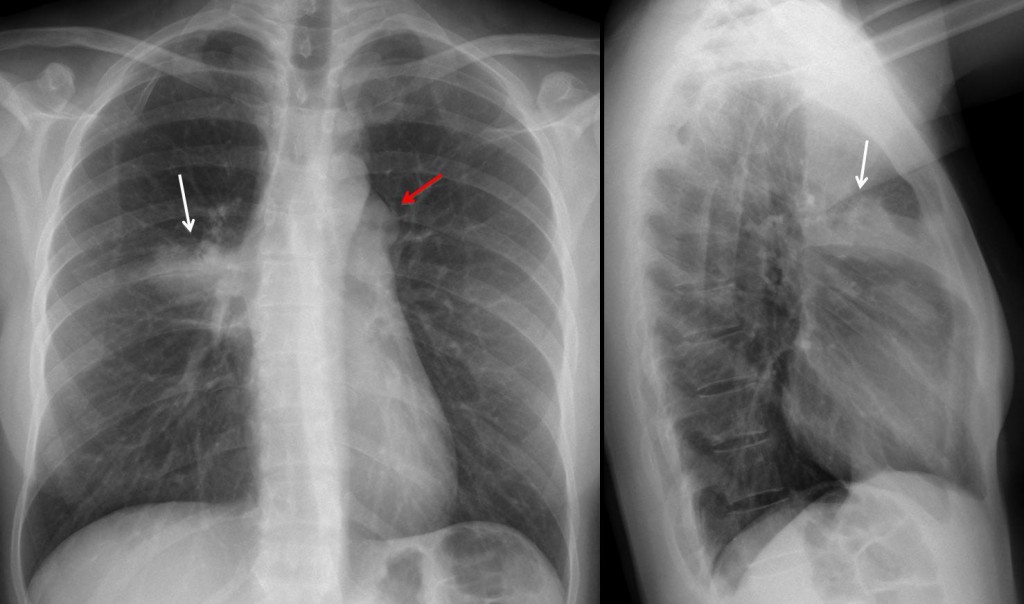
Fig. 1
CT shows anterior mediastinal lymphadenopathy (white arrows), cavitating pulmonary lesions (A, B, yellow arrows) and a right pulmonary infiltrate. PET-CT shows uptake of lymph nodes and pulmonary nodule (C, arrow).
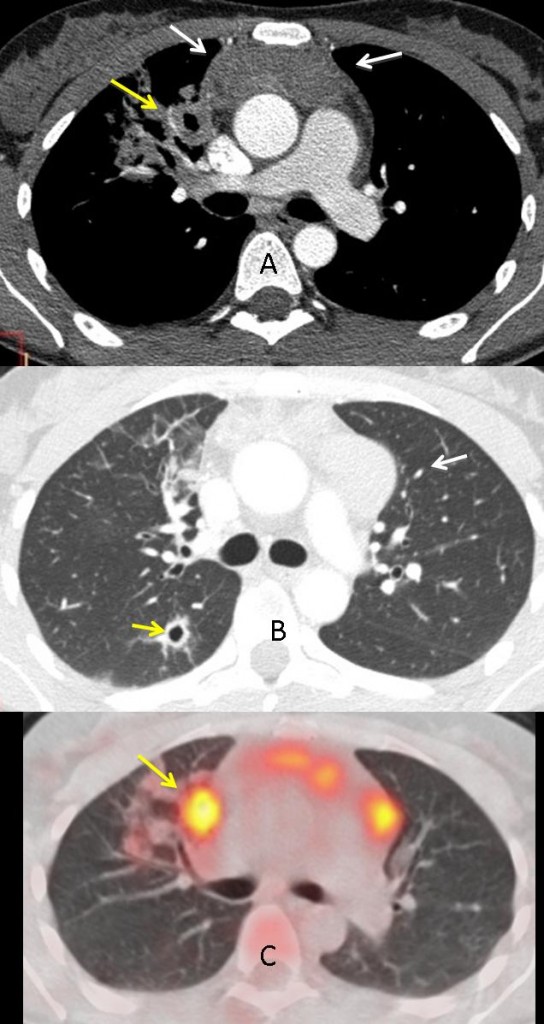
Fig. 2
Of the diagnoses suggested, Wegener’s is unlikely; lymphadenopathy is uncommon; and the pulmonary infiltration and nodules are confined to a single area. TB is a possibility, but the presence of non-necrotic lymph nodes in the anterior mediastinum, with none in the hilum, goes against it.
Lymphoma is the most likely diagnosis: usually present as anterior mediastinal lymphadenopathy, may invade pulmonary parenchyma by contiguity and occasionally is associated with cavitating pulmonary nodules.
Final diagnosis: Hodgkin’s disease, nodular sclerosis type.
Teaching point: when confronted with multiple findings, try to determine the most valuable. In this case, the anterior mediastinal lymphadenopathy, which suggests lymphoma in a young symptomatic patient.
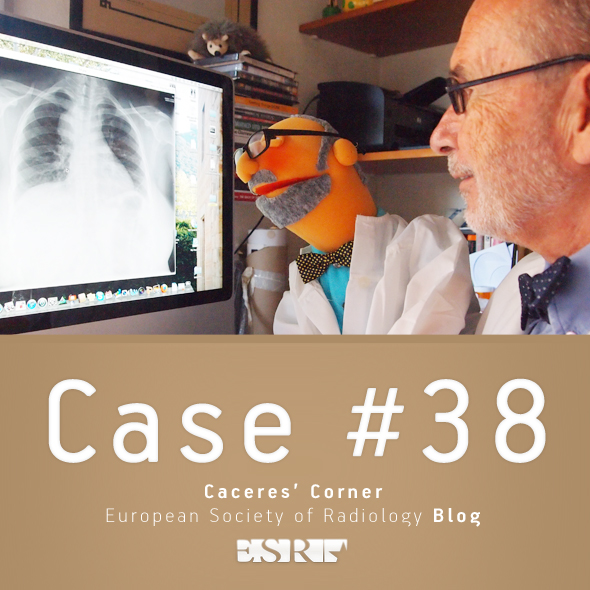
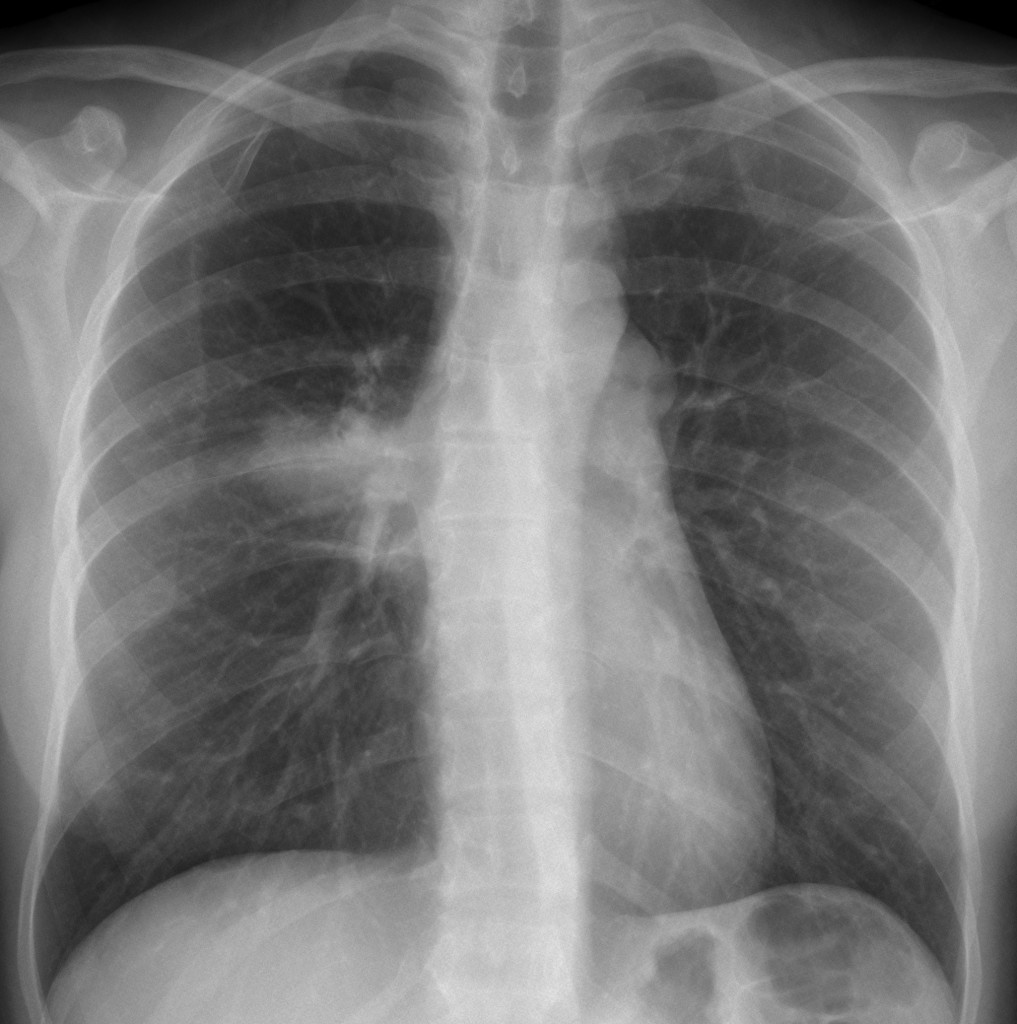
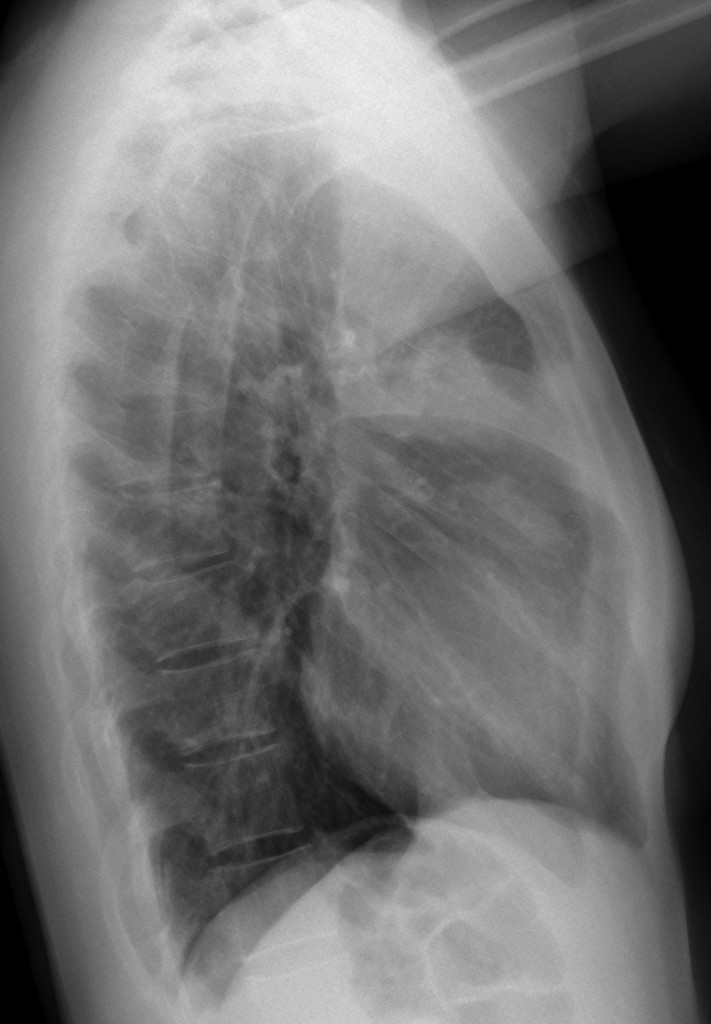
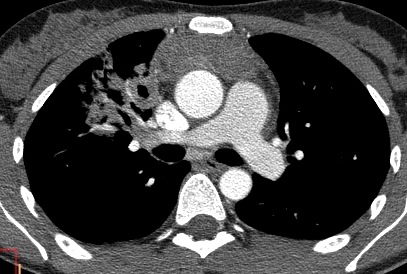
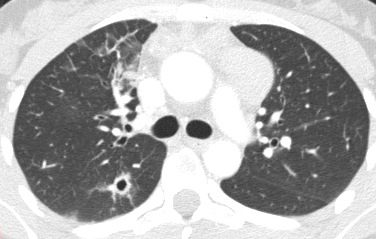




– anterior Mediastinal mass : thymoma
– upper right lobe : bronchiectasis + consolidation
– bronchiectasis of right lower lobe : post-infection
33 year old woman with recurrent pulmonary infections, acute episode of lung infection and thymoma : Good’s syndrome ?
(4 none of the above)
My findings:
1. Cavitating thick walled lesion left apex on the CXR, in the projection of the medial end of the clavicle.
2. Anterior mediastinal mass – (? conglomerate of enlarged lymph nodes – the lady is too old to have residual thymus).
3. Mass anterior segment right upper lobe on PA and LAT CXR – this mass can be further characterised by the available CT images…again it’s a cavitating thick-walled mass with surrounding ground glass opacification.
4. Axial CT image at a slightly higher level shows a further cavitating mass, this time at the apical segment of the right lower lobe. Surrounding ground glass is again seen.
Features are not of lymphoma…neither of TB (in the former I would expect bilateral hilar +/- anterior/middle mediastinal lymphadenopathy…less commonly posterior mediastinal lymphadenopathy, while in primary TB I would expect an upper zone consolidiation and/or unilateral hilar lymphadenopathy).
Wegener’s is known to be sometimes associated with a mediastinal mass, besides the usual known manifestations of cavitating lung lesions which may result in pulmonary haemorrhage.
So the most likely diagnosis here is Wegener’s…with an associated anterior mediastinal mass and with cavitating lung lesions. Some of these lesions have surrounding ground-glass, suggestive of surrounding intra-parenchymal pulmonary haemorrhage.
None of the above
La diagnosi è Vasculite necrotizzante di Wegener.La positività sierica di c.Anca ed anticorpi anti-PR3,unitamente ai risultati della BAL( aleolite emoraggica),sono diagnostici al 90 x cento e rendono inutile la conferma bioptica.Rx-torace:area di consolidamento parailare dx,svasamento mediastinico alto sx, ed opacità rotondeggiante con area trasparente centrale in sede apicale sx. TC: conglomerato adenopatico mediastico(reattivo) con nodulo escavato a dx unitamente ad irregolare area di opacità a carta geografica in sede parailare;Bronchiectasie parailare,dx, da probabile coiteressamento delle pareti bronchiali.
-Anterior mediastinal mass.
-Lymphadenopathy (left paratracheal, aortopulmonary window…)
-Cavitated consolidation (RUL) and cavitated nodule (RLL)
Lymphoma (is she HIV ?)
She is HIV negative; but it does not exclude your diagnosis.
TB
My dilema is between Wegener and lymphoproliferative disorder.
It’s common for both the peribronchial distribution of the lung consolidation(RUL). Its common for Wegener cavitating nodules and uncommon for lymphoma.
I tried to find some clues but didn’t see tracheo-bronchial involvement nor lung bases fibrosis, findings which would go for Wegener.
Then the extensive adenophatic infiltration goes with lymphoma, but it’s unspecific because could also be encountered in Wegener.
Not sex predilection in lymphoma, female predilection for Wegener.
They are nearly tied, but my first impresion was Wegener.
Then trying to convince myself I can see some ground glass halo in the cavitating nodule as in the peribronchial consolidation (unspecific sign we can see in various pathologies, but usually meaning haemorrage, findings which could favour Wegener in this case).
I definetely will vote for Wegener Granulomatosis.